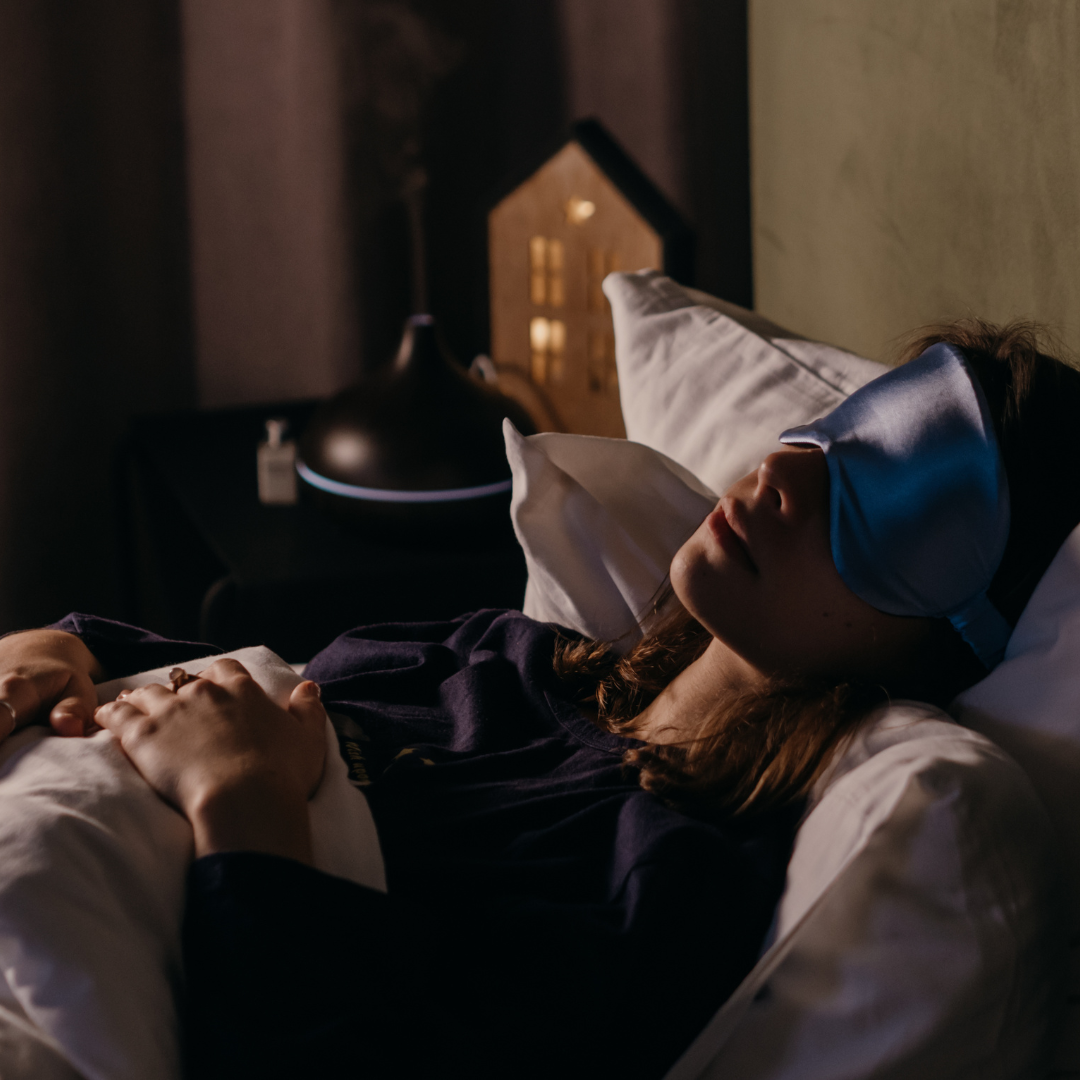Creating a calming bedtime routine can significantly improve sleep quality and overall well-being. A consistent routine helps signal the body that it’s time to wind down, making it easier to transition into sleep. Simple actions, such as dimming the lights and engaging in relaxing activities, can set the tone for a restful night.
Incorporating mindfulness practices, such as gentle stretching or meditation, can further enhance this routine. These practices not only promote relaxation but also help clear the mind of daily stressors. Individuals often find that a dedicated window of time for self-care before bed fosters a more peaceful state of mind.
By prioritizing a calming bedtime routine, anyone can create a sanctuary for sleep that encourages restorative rest. The key lies in consistency and finding personalized elements that promote tranquility, helping to transform bedtime into a cherished ritual.
The Importance Of A Calming Bedtime Routine
Establishing a calming bedtime routine plays a crucial role in promoting better sleep and overall well-being. Implementing a structured approach to winding down can enhance sleep quality and contribute positively to physical and mental health.
How Bedtime Routines Improve Sleep Quality
Consistency in bedtime routines signals to the body that it’s time to unwind. When individuals engage in calming activities each night, such as reading or gentle stretching, they may fall asleep faster.
A regular schedule also helps regulate the body’s internal clock. This leads to improved sleep patterns, allowing for deeper and more restorative sleep. Quality sleep enhances cognitive function and helps individuals feel more alert during the day.
Physical And Mental Health Benefits
A calming bedtime routine contributes significantly to mental health. It can reduce anxiety and stress by creating a safe space for relaxation. Activities like meditation and deep breathing can lower cortisol levels, promoting a sense of calm.
Physically, quality sleep supports the immune system and reduces the risk of chronic illnesses. It aids in muscle recovery and balances hormones that control hunger and mood. Incorporating calming practices each night benefits both physical and mental health, encouraging a holistic approach to well-being.
Impact On Mood And Attention
The effects of a calming bedtime routine extend to mood and attention. Better sleep quality is strongly linked to improved mood regulation. Individuals who prioritize their bedtime routine often experience fewer mood swings and greater emotional stability.
In addition, a restful night enhances concentration and focus during waking hours. It helps maintain attention spans, making daily tasks more manageable. By fostering a peaceful transition to sleep, individuals can experience significant improvements in both mood and attention, contributing to their overall quality of life.
Essential Steps To Create A Calming Bedtime Routine
Creating a calming bedtime routine involves several key steps that promote restful sleep. By focusing on consistency, gentle rituals, relaxation techniques, and a conducive sleep environment, individuals can significantly enhance their sleep quality.
Establish A Consistent Sleep Schedule
Consistency is crucial for developing healthy sleep habits. Setting a fixed bedtime and wake-up time helps regulate the body’s internal clock, making it easier to fall asleep and wake up refreshed.
She should aim to go to bed and rise at the same time every day, even on weekends. This practice reinforces the body’s natural sleep patterns.
To aid adherence to this schedule, using a sleep tracker or reminders on a phone can be beneficial. Keeping a sleep diary may also help in identifying patterns and areas needing adjustment.
Unwind With A Gentle Evening Ritual
Creating an evening ritual helps signal the body it is time to wind down. Engaging in calming activities can prepare the mind for sleep.
She might choose to read a book, practice gentle yoga, or listen to soothing music. Dimming the lights during this time can enhance relaxation by mimicking sunset and promoting melatonin production.
Limiting screen time at least an hour before bed is also important. Blue light emitted from devices can interfere with sleep onset and should be avoided to improve sleep quality.
Incorporate Relaxation Techniques
Incorporating relaxation techniques before bed can ease tension and anxiety. Breathing exercises, meditation, and progressive muscle relaxation are effective methods.
She might spend a few minutes doing deep breathing exercises, focusing on inhaling through the nose and exhaling slowly through the mouth. This practice lowers the heart rate and induces a calming effect.
Meditation apps can guide her through various techniques, making it easier to establish a routine. The goal is to create a peaceful transition from wakefulness to sleep.
Prepare A Relaxing Sleep Environment
The sleep environment plays a significant role in sleep quality. A calming atmosphere can facilitate a more restful night’s sleep.
Her bedroom should be cool, dark, and quiet. Using blackout curtains can eliminate unwanted light, while white noise machines can mask disturbing sounds.
Essential oils, such as lavender, can also contribute to relaxation. A comfortable mattress and bedding that suits personal preferences further enhance the sleep setting.
Maintaining a tidy space can foster peace of mind, allowing for a more restful sleep experience.
Relaxation Techniques To Add To Your Routine
Incorporating specific relaxation techniques can enhance a bedtime routine. From meditation to herbal tea, these practices promote calmness and prepare the mind and body for restful sleep.
Guided Meditation And Mindfulness
Guided meditation involves listening to a narrator who leads an individual through a series of calming thoughts or visualizations. It can help reduce stress and anxiety, making it easier for the mind to transition to sleep.
Mindfulness, on the other hand, focuses on being present in the moment. Practicing mindfulness before bed can involve observing sensations in the body or thoughts in the mind without judgment. Both techniques can be accessed through apps, recordings, or live sessions, providing flexibility in practice.
Deep Breathing And Progressive Muscle Relaxation
Deep breathing is a simple yet powerful technique for promoting relaxation. It can involve inhaling slowly through the nose, holding the breath, and exhaling through the mouth. This process can signal the body to relax, helping to lower heart rate and induce a state of calm.
Progressive muscle relaxation (PMR) complements deep breathing. It involves tensing and then relaxing different muscle groups systematically. Starting from the toes and moving up to the head, this technique can reduce physical tension and enhance mental relaxation, making it ideal before bedtime.
Gentle Yoga And Stretching
Gentle yoga incorporates slow stretches and poses aimed at releasing tension. This practice can help improve flexibility and calm the mind. Specific poses such as Child’s Pose or Legs-Up-the-Wall can be particularly effective in promoting relaxation.
A short stretching routine can be a beneficial addition to a bedtime routine. Focusing on areas commonly tense, like the neck and shoulders, can help ease physical discomfort. This physical release supports a peaceful transition into sleep.
Herbal Tea, Aromatherapy, And Warm Baths
Herbal tea is known for its calming properties, with options like chamomile or lavender being particularly effective. These teas can promote relaxation and support sleep.
Aromatherapy enhances the bedtime atmosphere. Essential oils like lavender have soothing qualities. Using a diffuser or adding a few drops to a warm bath can create a tranquil environment.
Taking a warm bath is another excellent way to wind down. It can relieve tension in muscles and signal to the body that it’s time to sleep. Ensuring the water is at a comfortable temperature enhances relaxation and overall comfort.
Habits And Environment To Support Better Sleep
Establishing habits and creating a conducive environment significantly enhances sleep quality. Addressing screen time, dietary choices, and setting a peaceful atmosphere are crucial steps for improvement.
Limiting Blue Light And Screen Time
Reducing exposure to blue light before bedtime can positively impact sleep quality. Devices such as smartphones, tablets, and computers emit blue light, which can disrupt the natural circadian rhythm.
To minimize this effect, individuals may consider implementing a digital curfew. Setting a limit for screen use in the hours leading up to sleep, ideally one to two hours, allows the body to prepare for rest.
Using features like “Night Shift” or blue light filters on devices may also help. Additionally, engaging in activities like reading a physical book or listening to calming podcasts can replace screen time effectively.
Reducing Caffeine And Alcohol Intake
Caffeine and alcohol can significantly impair the ability to fall and stay asleep. Caffeine, commonly found in coffee, tea, and energy drinks, is a stimulant that can remain in the system for several hours.
To promote better sleep, individuals should aim to avoid caffeine intake in the afternoon and evening. Instead, herbal teas or other caffeine-free options are advisable.
While alcohol may initially make one drowsy, it can lead to disrupted sleep patterns later in the night. Limiting alcohol consumption, particularly close to bedtime, can greatly enhance sleep quality and duration.
Creating A Sleep-Friendly Environment
The bedroom environment plays a vital role in promoting restful sleep. A cool, dark, and quiet space is optimal. Keeping the room temperature between 60-67°F (15-19°C) helps facilitate sleep.
Blackout curtains can effectively block out external light, while white noise machines or gentle ambient sounds aid in reducing disruptive noises.
Ensuring a comfortable mattress and pillows tailored to personal preferences can minimize discomfort during the night. Personalizing the space with calming colors and minimal clutter also contributes to a more peaceful retreat for sleep.
Care Routines And Setting The Mood For Sleep
Incorporating a consistent bedtime routine can signal to the body that it is time to wind down. Engaging in relaxing activities, such as a gentle skin-care routine, helps transition from the day’s hustle to a state of calm.
Bathing in warm water, practicing meditation, or simple deep breathing exercises can be beneficial.
In addition, incorporating dim lighting and engaging in low-energy activities can help set the mood for sleep. The right routine helps create a mental association between certain activities and sleep, reinforcing the habit over time.


